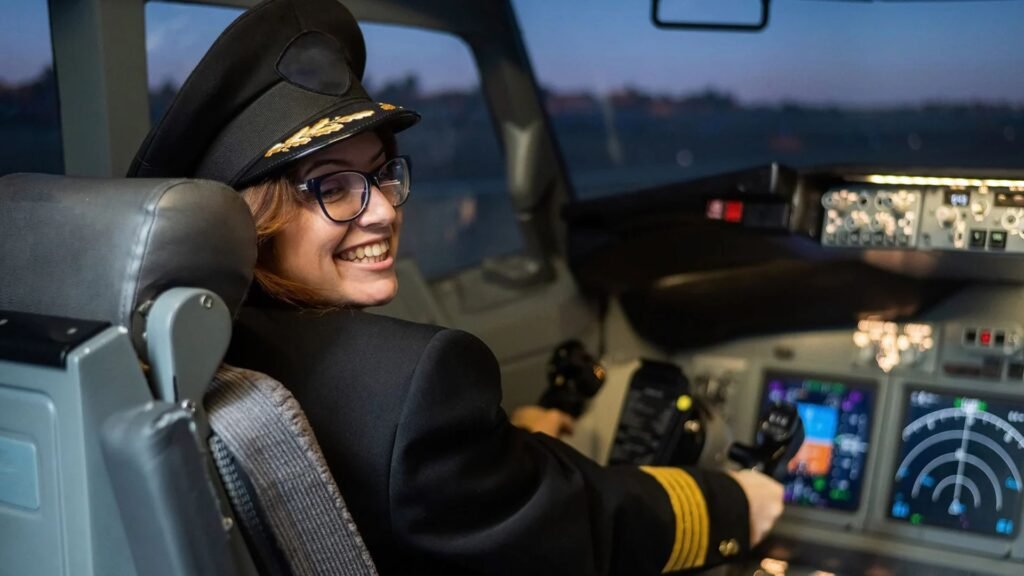Being a pilot is more than just flying a plane—it’s a demanding, multifaceted job that requires precision, focus, and constant adaptation. Whether you’re a commercial pilot, a private pilot, or an airline captain, each day brings its unique challenges and responsibilities. Here’s a glimpse into a typical day for a pilot and what it entails.

Pre-Flight Preparation
The day usually begins several hours before the plane takes off. For commercial pilots, this involves arriving at the airport early to complete all necessary pre-flight checks. Here’s what’s typically involved:
- Flight Briefing: Pilots receive a briefing on the route, weather conditions, and any potential hazards that might affect the flight.
- Aircraft Inspection: Pilots inspect the aircraft to ensure that it’s in good working order. This includes checking fuel levels, equipment, and all safety systems.
- Flight Plan Review: Pilots review the flight plan, taking into account factors like air traffic, weather, and alternate routes in case of an emergency.
- Coordination with Ground Crew: Pilots communicate with ground control to confirm departure procedures and ensure everything is ready for takeoff.
Boarding Passengers and Preparing for Takeoff
Once the pre-flight checks are complete, it’s time to board passengers and prepare the plane for takeoff. Pilots perform a final check to ensure everything is ready:
- Cockpit Setup: Pilots enter the cockpit and set up flight instruments, navigation systems, and autopilot settings.
- Passenger Briefing: While flight attendants handle the safety briefing, pilots often communicate with passengers over the intercom, providing important information like expected flight time and weather conditions.
- Final Communication with Air Traffic Control (ATC): Pilots receive final clearance from ATC for takeoff and confirm that the route is clear.
In-Flight Operations
Once airborne, the pilot’s job is far from over. The primary responsibilities during flight include:
- Flight Monitoring: Pilots continually monitor the plane’s speed, altitude, fuel levels, and systems. This requires constant attention to instruments and gauges.
- Communication with ATC: Throughout the flight, pilots stay in communication with ATC, receiving updates on weather, other traffic, and potential changes to the route.
- Weather Adjustments: Pilots must make decisions based on real-time weather updates, including adjusting altitude or course to avoid turbulence or storms.
- Managing Autopilot: While autopilot assists with many aspects of flight, pilots remain in full control, making necessary adjustments as needed.
Navigating the Challenges of the Flight
Pilots often face unexpected challenges, such as:
- Turbulence: Unexpected turbulence is common, and pilots are trained to handle it safely. They adjust speed, altitude, and sometimes route to minimize discomfort or risk.
- Communication with the Crew: Pilots stay in constant communication with the flight attendants to ensure passenger safety, especially during turbulence or other situations that might require attention.
Descent and Landing
As the flight nears its destination, the pilot must begin the descent and prepare for landing:
- Weather Considerations: Pilots review weather reports for the destination airport, checking for any potential hazards, such as fog, storms, or crosswinds.
- Landing Preparation: Pilots communicate with ATC for landing clearance and begin adjusting the aircraft’s speed and altitude. They also perform a final systems check to ensure everything is functioning correctly for landing.
- The Final Approach: Pilots take control of the aircraft for the final approach, making adjustments to the descent path as necessary and ensuring the plane aligns with the runway.
- Touchdown: Once on the runway, pilots apply reverse thrust and brakes to bring the plane to a safe stop. They then taxi the aircraft to the gate..
Conclusion
A pilot’s day is filled with a wide range of responsibilities, from the detailed pre-flight preparation to the precise operations required during flight and the debriefing process after landing. The work requires immense focus, skill, and attention to detail, along with a passion for aviation. Being a pilot is not just a job—it’s a commitment to ensuring the safety and comfort of passengers, while navigating the complexities of flight in a dynamic and ever-changing environment.









